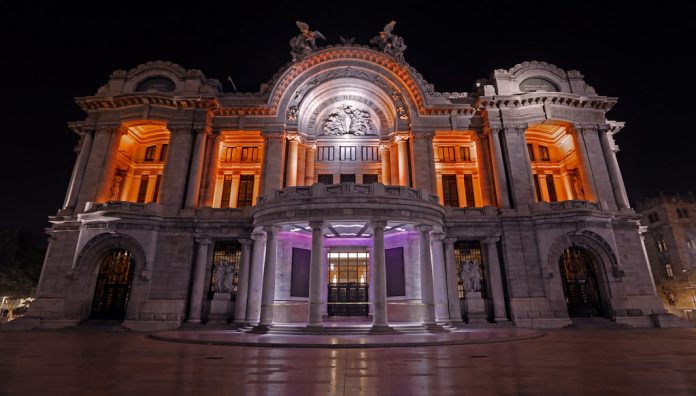When you think of Mexican culture, what is the first thing that comes to your mind? Mariachi, tequila, tacos, breathtaking beaches and cacti? These are legitimate associations – but Mexico’s natural and cultural diversity is much more than that. The 10 surprising facts about Mexico described below will reveal some other aspects of the country that you definitely didn’t know.
1. Mexico has the largest pyramid in the world.
Not Egypt, but Mexico – The Pyramid of Cholula in the Mexican federation of Puebla happens to be the largest pyramid in the world. At 66 meters high, with a base of 400 meters and a total volume of 4.5 million cubic meters, the pyramid is much larger than the Pyramid of Giza, although it is less popular. Despite its impressive size, it can indeed be overlooked for a reason: the Pyramid of Cholula is hidden beneath a mountain. The striking building is actually a church built by the Spanish conquistadors on top of the pyramids.
2. Mexico speaks 69 different languages.
This makes Mexico one of the most linguistically diverse countries in the world. In addition to Spanish, there are 68 indigenous languages, including Nahuatl, Mixtec and ostomy, among others. No other country on the American continent has a diversity of indigenous languages that rivals that of Mexico. Just like Spanish, indigenous languages are considered national languages.
3. Mexico City has the second largest number of museums in the world.
From the Metropolitan Cathedral to the Belles Artes [fine arts] museum and remnants of Aztec architecture, Mexico is undoubtedly a country that has a lot to offer in terms of culture. The metropolis is home to numerous museums, with more than 170 museums to visit. This makes it the second largest city in the world in terms of museums. It is second only to London and almost surpassed by London, which has 200 museums.
4. Mexico has the largest number of taxis in the world.
60,000 registered taxis drive the streets of Mexico, most of which can be found in the capital. Also, taxi fares in Mexico are cheaper than almost any other country in the world.
5. Mexico is a big consumer of Coca-Cola.
163 liters per person per year – a consumption rate not seen in any other country in the world. Not surprisingly, this abuse in Coca-Cola consumption can also be seen in people’s diabetes health, and Mexico has a higher than average rate of overweight. Other factors include lack of exercise and excessive consumption of junk food. In 2013, a punitive tax was introduced on foods high in fat or sugar content as a response to general health problems.
6. Mexico is the most visited tourist destination in Latin America.
According to the World Tourism Organization report, Mexico is the Latin American country with the largest number of international tourists and ranks 10th globally. This is not surprising given the diversity that Mexico has to offer in terms of culture and nature. Thirty-two sites in the country have been declared World Heritage Sites by UNESCO. Mexico once again leads the continent in this category and ranks 6th globally.
7. Dinosaur-destroying meteorite hits Mexico.
The meteorite that wiped out the dinosaurs 65 million years ago hit Mexico’s Yucatan Peninsula. A 180-square-meter crater with a depth of more than 600 meters was left behind. The crater was discovered in 1981 by employees of the national oil company PEMEX while drilling an oil well.
8. Color TV was invented by Mexicans.
Guillermo Gonzalez Camarena, the inventor of the color television, was born in Guadalajara, Jalisco, Mexico. In 1940, at the age of 23, he patented the first color image transmission system, which was later used on the Voyager 1 spacecraft.
9. Mexican cuisine is officially a World Heritage Site.
Tacos, enchiladas, and, of course, picante—traditional Mexican cuisine is unique in its diversity and goes well beyond borders. In 2010, UNESCO inscribed Mexican cuisine on the World Intangible Cultural Heritage List. With its origins dating back to colonial times, Spanish cuisine meets local cuisine to create a unique fusion. Homegrown ingredients include corn, avocado, beans, cocoa, and more. In Mexico, there are 64 different varieties of corn. No other country in the world can claim this diversity.
10. Mexico City was built on a lake – the city sinks about 12 centimeters every year.
In fact, the lakes where Mexico City is located are called cenotes. The Aztecs chose this place as a shrine to build the great Tenochtitlan; their capital. Later, the Spaniards decided to build their city on top of the Aztec buildings, resulting in the birth of a new city, New Spain that would later become Mexico City. However, Lake Texcoco is now almost dry. Some of the city’s buildings are reminiscent of the Leaning Tower of Pisa, as the capital is muddy underground and keeps sinking. It sinks about 12 centimeters a year, more than the Italian city of Venice, which sinks about 2 millimeters a year. While this is just a little recollection of random facts, these insights into Mexican culture can be very revealing when it comes to learning about the country and its people. Do you want to learn more about Mexican culture? please click here.



















